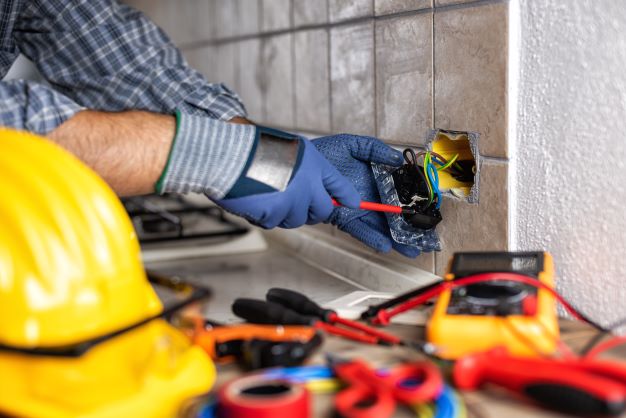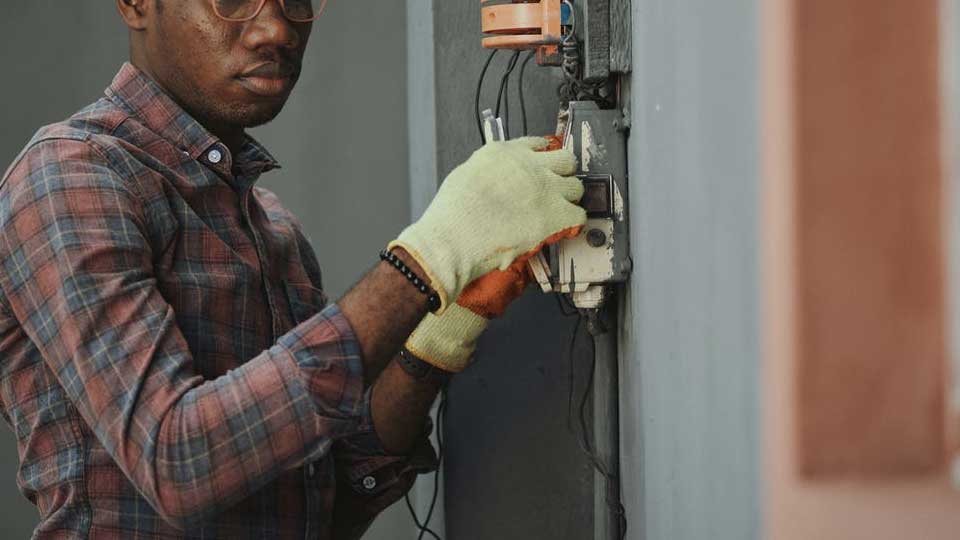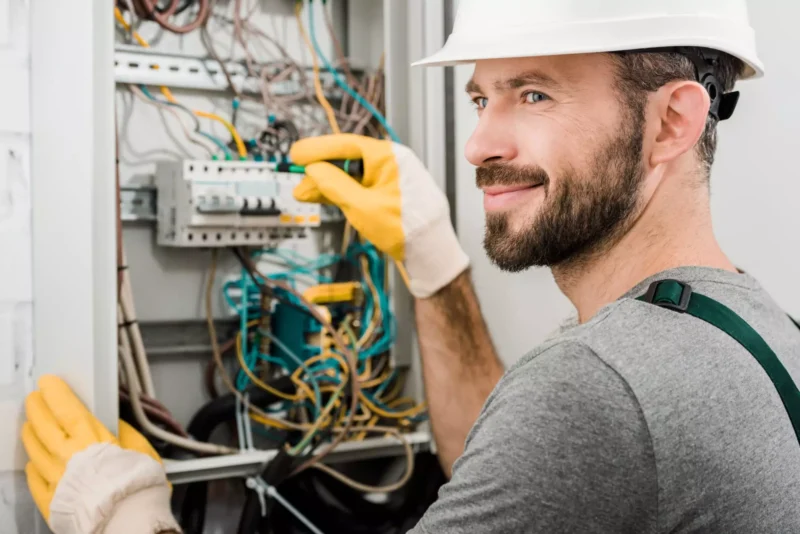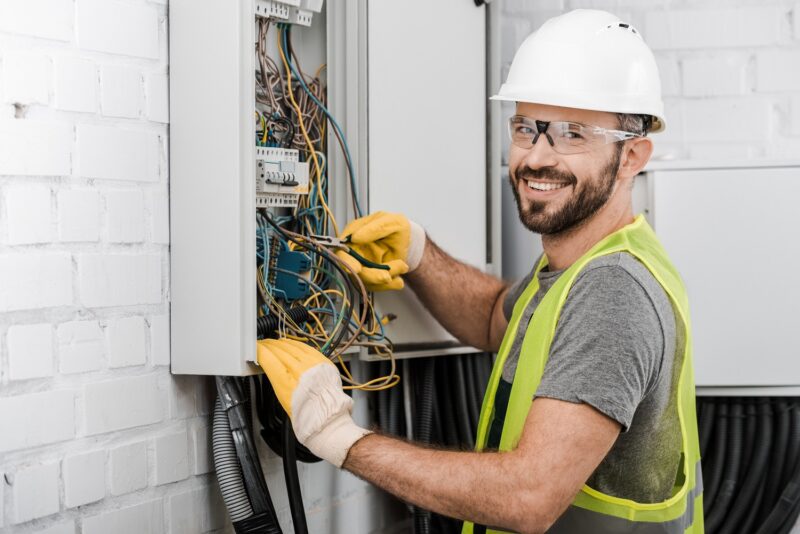Homeownership is accompanied by a wide array of responsibilities, including the crucial duty of maintaining and repairing the home’s electrical system. It’s not just about convenience or aesthetics—it’s about safety. A compromised electrical system can lead to fires, electrocution, and other hazards, so it’s essential to pay heed.
Understanding the scope of electrical repairs is a vital aspect of this responsibility. Some tasks can be tackled by homeowners with a solid understanding of electrical systems and a handy set of tools, while others require the expertise of a professional electrician. This distinction is not merely a matter of cost-saving; it’s also a matter of ensuring that repairs are completed correctly and safely. So, when you flip a switch and nothing happens, or when your circuit breakers are frequently tripping, it’s important to know whether it’s a problem you can fix or if it’s time to call in the pros.
Common Electrical Issues

From simple inconveniences to major headaches, electrical problems can manifest in many forms. The more common issues homeowners may encounter include circuit breaker trips, faulty outlets, flickering lights, or ungrounded outlets. Other problems might be less apparent, like overloaded circuits, outdated wiring, or improperly installed electrical systems.
Circuit breakers are designed to safeguard your home from electrical overload by “tripping” or shutting off. If you notice frequent breaker trips, it may indicate an overburdened circuit, a short circuit, or a ground fault—issues that can be serious.
Faulty outlets can range from ones that are loose or don’t provide power, to outlets with burn marks indicating dangerous arcing. Flickering lights can suggest a variety of problems, from a simple bulb issue to a more serious problem like loose or outdated wiring.
Identifying these issues can be the first step toward resolving them, but caution is essential—many electrical problems involve risks that shouldn’t be underestimated.
Safety First
While some electrical work can be done by homeowners, it’s paramount to prioritize safety. Electricity is not something to be taken lightly; a lack of understanding or one wrong move can lead to disastrous consequences.
Before undertaking any DIY electrical repair, equip yourself with the right tools and safety equipment. Ensure the power is off at the breaker before starting any work, and don’t rely solely on the switches. Test wires before touching them to ensure they’re not live.
Never work on electrical systems when they’re wet, or if you’re standing in water. And remember, if you’re ever unsure or uncomfortable with a task, it’s safer to hire a professional.
DIY vs. Professional Approach

The DIY approach can be rewarding—saving money, learning new skills, and the satisfaction of fixing something with your own hands. However, it’s not always the best approach, particularly when the task is complicated or high risk.
Professional electricians undergo extensive training, apprenticeships, and licensing processes. They have a deep understanding of electrical systems and can handle tasks more efficiently, effectively, and safely than an untrained individual. Furthermore, professionals know how to ensure repairs meet the requirements of local building codes, an often overlooked aspect of DIY repairs. If you’re drifting toward hiring a professional you definitely need to read more.
Simple DIY Fixes
That said, some repairs are safe and manageable for a confident and careful homeowner. For example, changing a light switch or installing a new outlet.
For a light switch, first turn off the power to the switch at the circuit breaker. Then, remove the faceplate and the screws holding the switch in place. Pull the switch out, take a picture of the wiring (for reference), and then disconnect the wires. Connect the wires to your new switch (referencing your picture), reinstall it in the wall, and replace the faceplate. Turn the power back on at the breaker, and test your new switch.
For an outlet, the steps are similar. After turning off the power at the breaker, remove the faceplate and outlet from the wall. Take a picture of the wiring, then disconnect the wires. Connect the wires to the new outlet, referencing your picture. Reinstall the outlet and faceplate, then turn the power back on and test your new outlet.
Know Your Limits

While it’s empowering to solve home issues on your own, it’s equally important to recognize when a repair is beyond your expertise. For instance, any job involving the main circuit breaker panel, anything related to the structure of your home’s wiring system, or major appliances and HVAC systems typically require a professional.
Beyond the complexity and potential danger involved, one must consider the legal implications. In many locations, doing your own electrical work beyond minor repairs can be against code and could negatively affect your homeowners insurance or your ability to sell your home.
Complex Electrical Repairs
Complex electrical repairs are often outside the realm of DIY. Tasks such as electrical panel upgrades, rewiring projects, and installing new circuits are complex and potentially dangerous if not done correctly.
An electrical panel upgrade, for instance, can involve working with the main power line, a task fraught with risks. Similarly, rewiring a home involves understanding the entirety of the home’s electrical system, including how circuits are divided, the types of wiring used, and how they’re rooted and grounded.
In these instances, the experience, knowledge, and equipment of a professional electrician are crucial.
Electrical Code Compliance
Compliance with electrical codes isn’t just a bureaucratic hurdle; it’s an important safety measure. Electrical codes are based on the National Electrical Code (NEC), a set of safety standards designed to reduce the risks of fire, electric shock, and other hazards.
These codes cover all aspects of a home’s electrical system and change regularly as new technologies and safety measures are developed. A professional electrician will be up-to-date on these codes and can ensure that all work is in compliance.
Electrical Safety Inspections

Regular electrical safety inspections are a key part of home maintenance. A professional electrician can identify potential hazards, outdated systems, and code violations that you might miss.
Inspections might involve checking outlets, switches, and light fixtures; testing safety devices like GFCIs; examining your electrical panel and wiring; and looking for common safety issues.
Hiring an Electrician
When it’s time to hire an electrician, take the time to research and choose wisely. Check licenses and references, and get multiple quotes.
Licensing guarantees a certain level of expertise and indicates that the electrician knows local codes and regulations. References and reviews can provide insight into the electrician’s reliability and quality of work. Multiple quotes ensure you get a fair price. Don’t always go for the lowest bid, but consider the value the electrician is offering.
Cost Considerations
Weighing the costs of DIY repairs versus hiring an electrician isn’t just about immediate costs. It’s also about long-term safety and value. A cheap DIY repair today that results in a fire hazard isn’t a savings—it’s a ticking time bomb.
Remember, there’s value in a job done correctly, especially when it comes to something as important and potentially dangerous as electrical work.
Conclusion
Navigating home electrical repairs is a delicate balancing act of knowing when to take matters into your own hands and when to call in a professional. Remember, DIY repairs can be rewarding and cost-effective, but safety and code compliance should never be compromised. By understanding the complexity and potential dangers associated with certain tasks, homeowners can make informed decisions and ensure their homes are both safe and functional.

